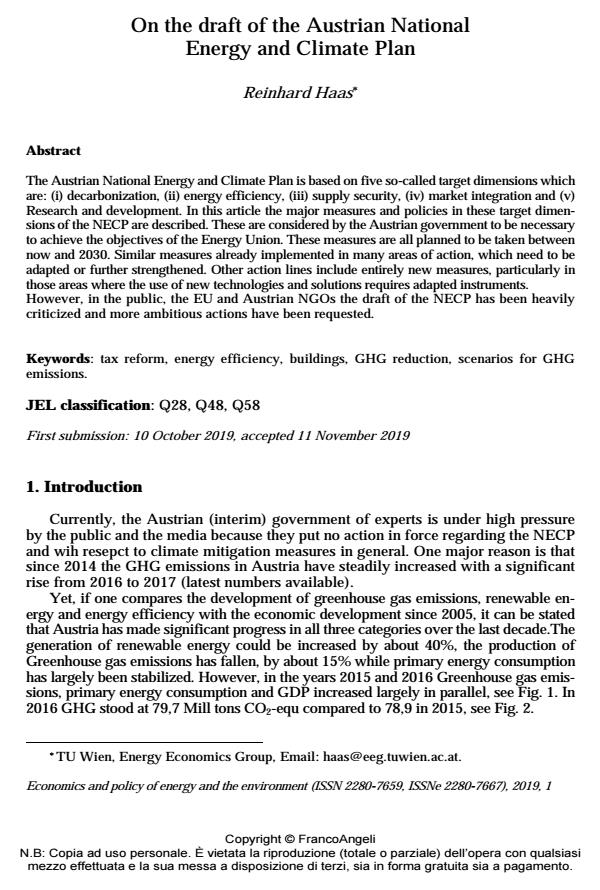On the draft of the Austrian National Energy and Climate Plan
Titolo Rivista ECONOMICS AND POLICY OF ENERGY AND THE ENVIRONMENT
Autori/Curatori Reinhard Haas
Anno di pubblicazione 2019 Fascicolo 2019/1
Lingua Inglese Numero pagine 13 P. 43-55 Dimensione file 155 KB
DOI 10.3280/EFE2019-001003
Il DOI è il codice a barre della proprietà intellettuale: per saperne di più
clicca qui
Qui sotto puoi vedere in anteprima la prima pagina di questo articolo.
Se questo articolo ti interessa, lo puoi acquistare (e scaricare in formato pdf) seguendo le facili indicazioni per acquistare il download credit. Acquista Download Credits per scaricare questo Articolo in formato PDF

FrancoAngeli è membro della Publishers International Linking Association, Inc (PILA)associazione indipendente e non profit per facilitare (attraverso i servizi tecnologici implementati da CrossRef.org) l’accesso degli studiosi ai contenuti digitali nelle pubblicazioni professionali e scientifiche
The Austrian National Energy and Climate Plan is based on five so-called target dimensions which are: (i) decarbonization, (ii) energy efficiency, (iii) supply security, (iv) market integration and (v) Research and development. In this article the major measures and policies in these target dimensions of the NECP are described. These are considered by the Austrian government to be necessary to achieve the objectives of the Energy Union. These measures are all planned to be taken between now and 2030. Similar measures already implemented in many areas of action, which need to be adapted or further strengthened. Other action lines include entirely new measures, particularly in those areas where the use of new technologies and solutions requires adapted instruments. However, in the public, the EU and Austrian NGOs the draft of the NECP has been heavily criticized and more ambitious actions have been requested.
Parole chiave:Tax reform, energy efficiency, buildings, GHG reduction, scenarios for GHG emissions.
Jel codes:Q28, Q48, Q58
- Review of Energy and Climate Plans of Baltic States: The Contribution of Renewables for Energy Production in Households Dalia Streimikiene, Grigorios L. Kyriakopoulos, Gintare Stankuniene, in Energies /2022 pp.7728
DOI: 10.3390/en15207728
Reinhard Haas, On the draft of the Austrian National Energy and Climate Plan in "ECONOMICS AND POLICY OF ENERGY AND THE ENVIRONMENT" 1/2019, pp 43-55, DOI: 10.3280/EFE2019-001003